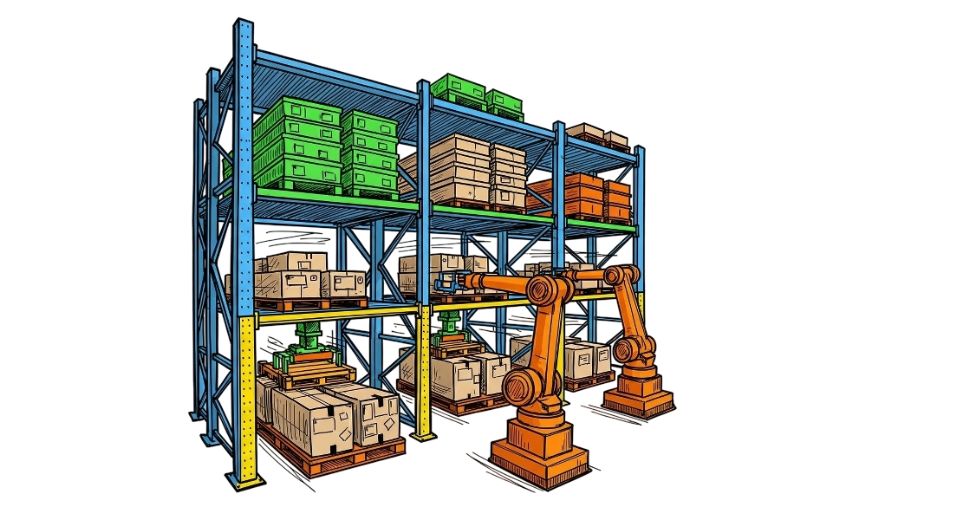Automated Storage & Retrieval System (ASRS) Market To Reach $17,583.70 Million by 2032

Introduction unfolds with acknowledgement of the recent market report on the global automated storage & retrieval system (ASRS) market given by metastat insight highlighting rising dynamics transforming businesses across the globe. This treatise arises from more than fourteen years of building stories that interpret technological advances into effective strategic summaries. Attention is drawn to new developments at the forefront of logistics operations, supply chain orchestration, and warehousing practices, highlighting robotics innovation, intelligent control developments, and cross-industry integration handed up through the broadened perspective of this current metastat insight presentation.
Sophisticated robotics deployment within warehousing facilities now redefines space usage, throughput optimization, and system reliability. Modular units with smooth vertical and horizontal movement replace conventional pallet racking to facilitate smaller storage footprint and faster retrieval. Scalability is closely aligned with changing warehousing requirements; growth can keep pace with inventory volume fluctuations, and reduction keeps operations efficient. Robotic shuttles, crane systems, and automated mobile vehicles perform the task of storing and retrieving without human involvement. These devices function under centralized management software, allowing simultaneous task prioritization and dynamic routing benefiting overall end-to-end optimization.
Digital transformation resonates in the convergence of control systems and real-time data analytics at every node of storage networks. Monitoring platforms gather operational metrics, enabling predictive maintenance and minimizing downtime through early fault detection. Prevention of downtime enables smoother continuity, promoting high service reliability. Data visualization tools present actionable information to operations managers to schedule maintenance windows and maximize throughput. Decision support systems optimize buffer levels and task sequencing, improving responsiveness to demand variability.
Industry verticals like e-commerce, food and beverages, pharmaceuticals, and manufacturing increasingly utilize automated storage and retrieval systems. Tailored configurations support temperature-controlled zones, sensitive product handling, and high-density storage needs. Cold chain operation combines insulated units and climate monitoring controls to maintain sensitive products, while pharmaceuticals enjoy coded traceability and compliance integration. Manufacturing configurations optimize part-retrieval efficiency for just-in-time assembly lines. These systems provide reliability and precision, supporting throughput while minimizing the need for manual labor.
Investment comes to the automation sector from third-party fulfilment companies, logistics service providers, and international retail behemoths. Warehousing footprints increase with intelligent systems as bases for omnichannel fulfilment. Automated retrieval modules support picking functions, decreasing order-lead time and improving order accuracy. Operating efficiency is realized through shorter travel distances during picking, high storage capacity, and around-the-clock operation in multiple shifts. Return on investment computes over lifetime through energy savings, lower rates of error, and lower staffing needs. Support for seamless integration with warehouse management systems and enterprise resource planning systems enhances supply chain visibility and reporting.
Technological development is focused on machine learning and artificial intelligence applying demand prediction, path-planning algorithms, and energy-optimization techniques. Systems scale to demand profiles, adjusting retrieval prioritization on the basis of current order profiles and replenishment horizons. Energy consumption dynamically scales during light volumes, idle subsystems reduce to power-saving states, while peak loads cause full-capacity mobilization. Machine learning algorithms detect wear patterns, suggest replacing components, and optimize operating parameters for stability in performance. Real-time decisioning enables handling demand peaks and seasonality, yet with the preservation of operational integrity.
Global patterns are supported by mounting take-up in developing economies, supply chain transformation, and more investment in infrastructure resilience. Urban distribution nodes experience storage densification in the form of vertical automation. E-commerce order fulfillment centers embrace robotics to orchestrate high-velocity order flow. Cold storage facilities evolve automated environments for perishable products, minimizing spoilage using exacting environmental control. Pharmaceutical storage employs temperature-sensitive automated retrieval to maintain compliance and traceability. Industrial manufacturing factories maximize in-plant feeding systems, synchronizing deliveries with assembly sequencers, reducing inventory bottlenecks.
Sustainability is made a key consideration in deployment choices. Energy-saving drive systems, LED lighting for aisles, regenerative braking on crane units, and intelligent power-management algorithms reduce energy expenditure. Carbon footprint reduction converges with company goals in green logistics. Material handling systems with extended lifespan and fewer maintenance cycles lead to less waste and lower lifecycle environmental effect. System design incorporates recyclable materials and retrofitting for technology upgrade without complete replacement, enabling resource efficiency and economical modernization.
Integration with robotics goes beyond movement systems to collaborative deployment of robotics. Mobile platforms aid human operators in order consolidation, part preparation, and quality inspection. Automatic guided vehicles transport components to assembly stations or pack-out locations, bridging storage to process centers. Collaborative robots assist in packing and sorting work alongside retrieval systems, allowing task handoff and hybrid workflows where automated capability and manual dexterity coexist. Supervisory control monitors collaborative zones, ensuring safety and workflow harmony while maximizing throughput.
Market competitive landscape indicates increasing number of vendors providing customized, scalable automation solutions. Custom engineering accommodates limitations of available facilities, ceiling clearances, floor loading allowances, and retrofitting. System designers provide plug-and-play modules to deploy incrementally, facilitating phased investment. Vendors provide packages of service, remote diagnostics, and cloud-based system enhancements. Interoperability across wider supply chain ecosystems is facilitated by partnerships of automation providers with software experts, creating more coordinated logistics networks.
Risk mitigation policies guide decision models considering system availability, vendor dependability, and flexibility to changing storage requirements. Contingency planning involves redundancy in key handling paths. Software architecture utilizes modular microservices designs that separate failures without compromising the system's ability to operate as a whole. Cybersecurity controls protect control systems and data integrity, preventing disruption.
Finally, the focus is brought back to the worldwide automated storage & retrieval system (ASRS) market report provided by metastat insight reinterpreting existing trends in narrative that offers deep expertise in making technical advancements meaningful to action. The spotlight is kept on technological maturity, operational synergy, sustainability and cooperative evolution defining warehouse automation's future worldwide.
Drop us an email at:
inquiry@metastatinsight.com
Call us on:
+1 214 613 5758
+91 73850 57479
 Agriculture
Agriculture
 Aerospace and Defense
Aerospace and Defense
 Automation & Process Control
Automation & Process Control
 Automotive and Transportation
Automotive and Transportation
 Banking & Finance
Banking & Finance
 Biotechnology
Biotechnology
1.png) Chemicals and Materials
Chemicals and Materials
 Consumer Goods
Consumer Goods
 Energy and Power
Energy and Power
 Food and Beverages
Food and Beverages
 Healthcare IT
Healthcare IT
 Information & Communications
Information & Communications
 Manufacturing and Construction
Manufacturing and Construction
 Packaging
Packaging
 Pharmaceuticals
Pharmaceuticals
 Electronics and Semiconductor
Electronics and Semiconductor
 Medical Devices
Medical Devices







 US: +1 3023308252
US: +1 3023308252






